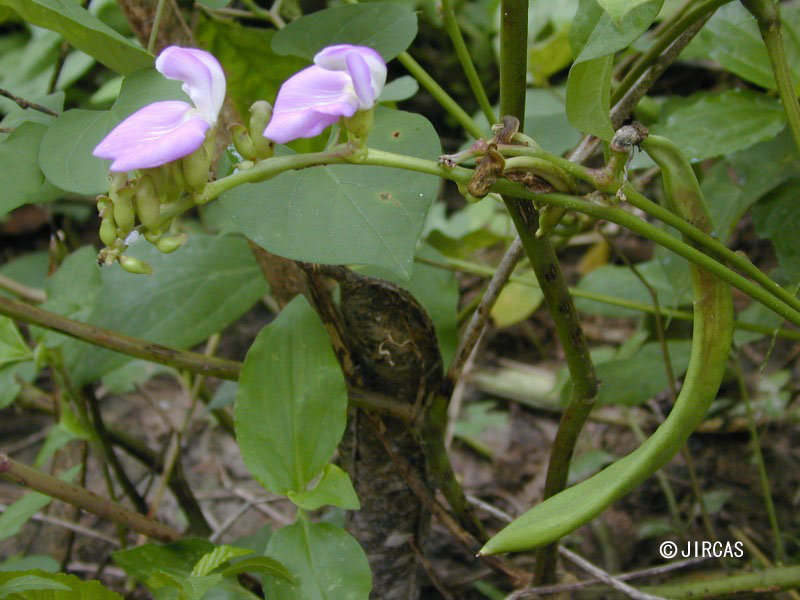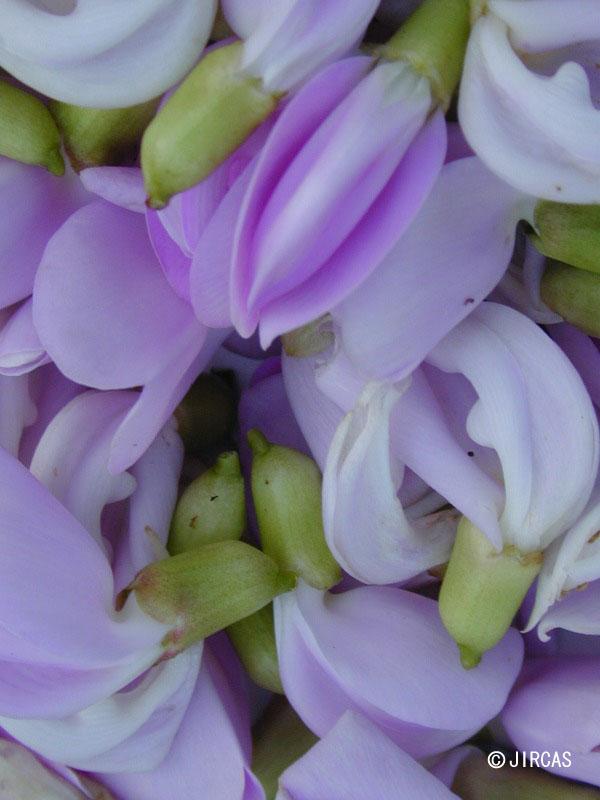Canavalia gladiata (Jacq.) DC. (Fabaceae)
- Scientific name
- Canavalia gladiata (Jacq.) DC.
- Family name
- Fabaceae (Syn. Leguminosae)
- Common name
- Sword bean (English); natamame (Japanese)
- Local name
- Thua phraa, thua daap, thua faa
Perennial herbaceous climber or undershrub, often cultivated as an annual. Leaves compound, trifoliolate with a short rachis; leaflets ovate, mucronate, green, 8–15 × 5–10 cm. Petiole 6–20 cm long. Inflorescence an axillary raceme, up to 15 cm long. Peduncle up to 20 cm long. Flowers papilionaceous, lilac or white. Petals 3.5 cm long. Fruit a legume, linear-oblong, flat, keeled, 15–40 × 3–5 cm, containing 8–20 seeds. Seeds oblong-ellipsoid, compressed, 2.5–3.5 × 1.5–2 cm; with hilum 1.5–2 cm long; white, grey, or red.
In a similar species, Canavalia ensiformis , the pod is 8 or more times longer than wide, and the hilum is less than half of the seed length. Canavalia gladiata is of Asiatic or African origin, whereas C. ensiformis originated in the New World. Both species are propagated by direct seeding at a spacing of approximately 45 cm between plants and 75 cm between rows. Both species prefer full sun.
Young shoots, young pods, and flowers are blanched and served with nam phrik (dipping sauces). The sour-tasting leaves are added to tom yam soup or blanched and served with khanom jeen (fermented rice noodle) and peanut curry. Young pods are added to curries or fried.
Young shoots, young pods, and flowers are blanched and served with nam phrik (dipping sauces). The sour-tasting leaves are added to tom yam soup or blanched and served with khanom jeen (fermented rice noodle) and peanut curry. Young pods are added to curries or fried.





